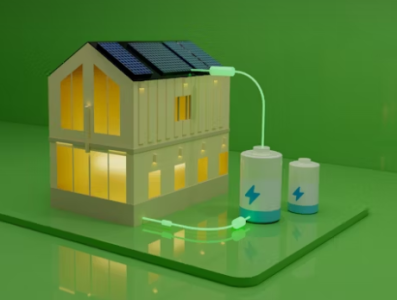Automatic $1,000 energy bill credit hitting bank accounts on November 15—see if you qualify
- Replies 0
As the leaves turn and the chill of autumn settles in, many households will soon see extra help arriving in the form of energy bill credits.
Automatic payments between $200 and $1,000 are set to roll out as part of a nationwide program aimed at easing the burden of heating and cooling costs.
The federally funded initiative provides targeted relief to low-income families who often struggle the most during seasonal spikes.
This round of support could be the timely assistance needed to keep homes safe and comfortable this winter.
LIHEAP is a nationwide program designed to help low-income households manage their energy expenses, especially during the most demanding months of the year.
While the program is funded by the federal government, each state sets its own eligibility rules and benefit amounts.
That means the help you receive—and how you qualify—can vary depending on where you live.
For the 2024 fiscal year, more than 100,000 households in Louisiana alone received assistance with their heating and cooling bills.
And it’s not just Louisiana—states across the country are gearing up to distribute these much-needed funds as the colder months approach.

Cooling benefits are available from April through September, while crisis and weatherization programs may be open year-round.
Payments are typically made directly to your utility provider, reducing your bill automatically.
In some cases, you may receive a direct payment or credit, depending on your state’s process.
Eligibility is based on your household income and the number of people living in your home.
Here’s a quick look at the income thresholds for Louisiana in 2025 (other states have similar guidelines, but check your local program for specifics):
Also read: This 92-year-old woman overpaid energy bills for a decade—don’t let this shocking mistake happen to you
If you’re 65 or older, you may be eligible for even more savings. For example, Entergy Gulf States Utilities in Louisiana offers a $6 monthly waiver for seniors with an annual income under $10,000.
Other energy companies provide additional benefits like free caulking, outlet plugs, solar screens, refrigerator replacements, and general repairs—small upgrades that can make a big difference in your comfort and your wallet.
LIHEAP applications are processed on a first-come, first-served basis, and funds can run out quickly.
Experts like Mark Wolfe, executive director of the National Energy Assistance Directors Association, urge anyone struggling with utility bills to apply as soon as possible: “If you’re having trouble paying that utility bill, don’t hesitate to reach out to apply for assistance.”
Also read: 5 things that drain the most electricity in your home
If you’re not sure where to start, a quick call to your local community action agency or utility provider can point you in the right direction.
Read next: Could you qualify? New energy bill credit of up to $1,100 arrives this October

Have you received LIHEAP benefits in the past? Do you have tips for keeping energy costs down during the winter? Or maybe you have questions about the application process?
Automatic payments between $200 and $1,000 are set to roll out as part of a nationwide program aimed at easing the burden of heating and cooling costs.
The federally funded initiative provides targeted relief to low-income families who often struggle the most during seasonal spikes.
This round of support could be the timely assistance needed to keep homes safe and comfortable this winter.
LIHEAP is a nationwide program designed to help low-income households manage their energy expenses, especially during the most demanding months of the year.
While the program is funded by the federal government, each state sets its own eligibility rules and benefit amounts.
That means the help you receive—and how you qualify—can vary depending on where you live.
For the 2024 fiscal year, more than 100,000 households in Louisiana alone received assistance with their heating and cooling bills.
And it’s not just Louisiana—states across the country are gearing up to distribute these much-needed funds as the colder months approach.

The size of your benefit and the rules that apply depend on where you live. Image source: Philip Oroni / Unsplash
How Much Can You Get?
- Standard Benefits: Payments typically range from $200 to $800, depending on your state, household size, and specific energy needs.
- Crisis Benefits: If you’re facing an emergency—like a shutoff notice or a broken furnace—you could qualify for up to $1,000 in crisis assistance.
- Weatherization Support: Some states also offer weatherization programs to help make your home more energy-efficient, which can mean lower bills in the long run.
Cooling benefits are available from April through September, while crisis and weatherization programs may be open year-round.
Payments are typically made directly to your utility provider, reducing your bill automatically.
In some cases, you may receive a direct payment or credit, depending on your state’s process.
Eligibility is based on your household income and the number of people living in your home.
Here’s a quick look at the income thresholds for Louisiana in 2025 (other states have similar guidelines, but check your local program for specifics):
- 1 person: $29,889
- 2 people: $39,086
- 3 people: $48,283
- 4 people: $57,480
- 5 people: $66,676
- 6 people: $75,873
- 7 people: $77,598
- 8 people: $79,322
- 9 people: $81,046
- 10 people: $82,771
Also read: This 92-year-old woman overpaid energy bills for a decade—don’t let this shocking mistake happen to you
If you’re 65 or older, you may be eligible for even more savings. For example, Entergy Gulf States Utilities in Louisiana offers a $6 monthly waiver for seniors with an annual income under $10,000.
Other energy companies provide additional benefits like free caulking, outlet plugs, solar screens, refrigerator replacements, and general repairs—small upgrades that can make a big difference in your comfort and your wallet.
LIHEAP applications are processed on a first-come, first-served basis, and funds can run out quickly.
Experts like Mark Wolfe, executive director of the National Energy Assistance Directors Association, urge anyone struggling with utility bills to apply as soon as possible: “If you’re having trouble paying that utility bill, don’t hesitate to reach out to apply for assistance.”
Also read: 5 things that drain the most electricity in your home
What You’ll Need to Apply
- Recent utility bills (from the last 30 days)
- Proof of income for all household members (pay stubs, Social Security, pensions, retirement, unemployment)
- Proof of address
- Government-issued ID
- Social Security cards for everyone in your household
- For crisis assistance: a disconnect or pending disconnection notice
If you’re not sure where to start, a quick call to your local community action agency or utility provider can point you in the right direction.
What About Other States?
Louisiana isn’t the only state offering these benefits. For example:- North Dakota residents may receive up to $1,100 in LIHEAP payments.
- In some areas, relief can range from $250 to $1,800.
- DC residents can also expect significant support.
Read next: Could you qualify? New energy bill credit of up to $1,100 arrives this October
Key Takeaways
- Americans can soon receive automatic payments between $200 and $1,000 through the federally funded Low-Income Home Energy Assistance Program (LIHEAP) to help with heating and cooling bills, with eligibility and benefit amounts varying by state.
- In Louisiana, heating benefits run from 15 November to 5 March, cooling from 1 April to 30 September, and crisis and weatherization programs are available year-round.
- Eligibility for LIHEAP depends on household income and size, with a one-person household needing to earn less than $29,889 annually to qualify; higher limits apply for larger households.
- Applications for these benefits are processed on a first-come, first-served basis, so applicants are encouraged to apply early and provide required documentation such as proof of income, utility bills, and identification.






